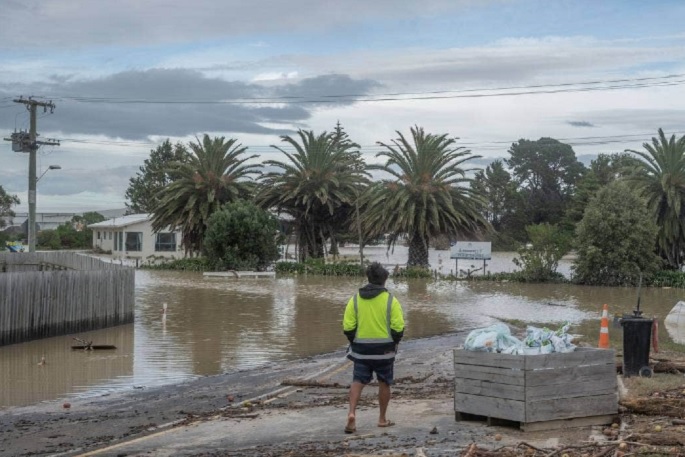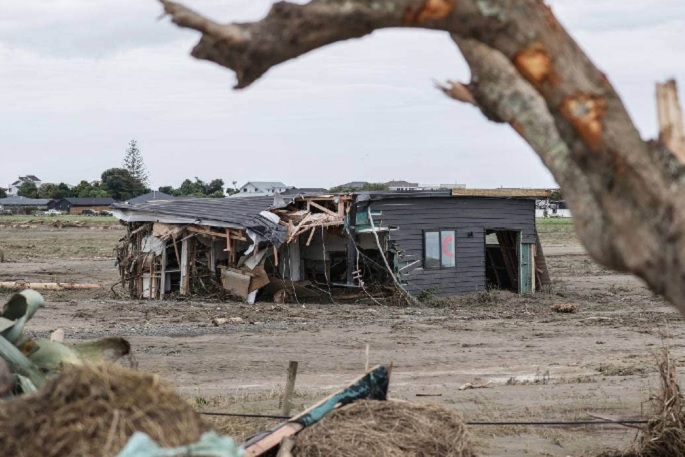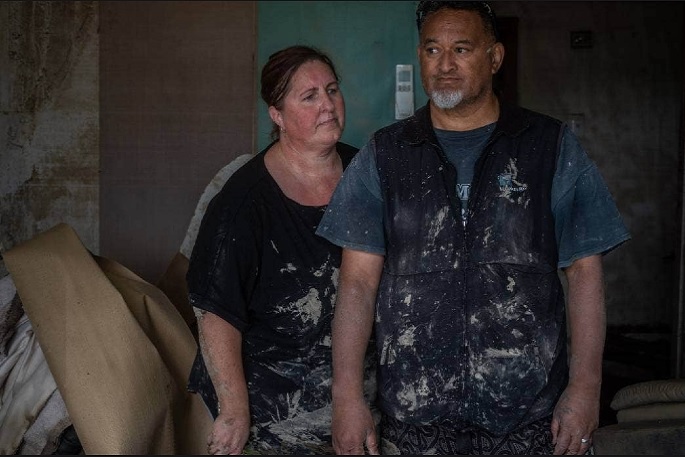Almost 5000 people are unaccounted for as grave concerns are held for about 10 still missing in the decimation left by Cyclone Gabrielle.
With the official death toll standing at nine, Police Deputy Commissioner Glenn Dunbier guessed about half of those reported as uncontactable are in the cut-off East Cape area.
'We triage the reports of people that are missing and clearly those that we have heightened concerns for will come to the top,” says Dunbier, adding the number fluctuates day to day.
He also warned police would take a 'hard line” on illegal behaviour, following reports of a Napier shooting incident and looting of shops and evacuated homes, as well as issues of aggression towards workers and thefts of generators powering cellphone towers.
Nearly a week after the cyclone decimated New Zealand's northern regions, Saturday's official update painted a picture of still-dire conditions, though there have been improvements.
Roger Ball, acting director for the National Emergency Management Agency, said the key focus was returning cellphone coverage back to affected areas.
About 90 per cent of cell phone towers were operating again in Hawke's Bay, 80 per cent in Auckland, and 30 per cent in Gisborne – however this was expected to greatly improve by the end of the weekend.

Nearly a week after the cyclone decimated northern regions, the situation is still dire. Photo: Juan Zarama Perini.
Ball said about 24 per cent of households in Napier now have electricity and urgent work was continuing to bring more online as quickly as possible.
Gisborne's water plant was back up and running after a replacement unit was delivered late Friday on a C130 Hercules.
There'd also been some improvement in Wairoa, an area that's been in particular focus for urgent assistance. BP had assured some fuel could be delivered and there is an option to fly it in as well.
Other reports from Saturday also hinted at slow but crucial improvements in affected areas.
While 39,000 Hawke's Bay homes were still without power, one company, Northpower, announced 25,000 had been restored in the Northland and Kaipara regions.
Also in the region, of the 393 dairy farms that initially lost power, only 43 were still cut-off and remained a priority.
But even as some of the affected communities come back online, other updates made it clear there's still a long and painful road ahead.
Currently, 1500 people are sheltering in national defence centres, with most in Hawke's Bay where more than 120 Urban Search and Rescue (Usar) staff have been joined by 25 from Australia.
The teams continue combing the worst-hit areas in Hawke's Bay and Gisborne Tairāwhiti for survivors, checking individual houses and combing back through 111 calls to target specific areas.
Assisting in the efforts are members of Surf Lifesaving NZ in inflatable rescue boats while cadaver dogs have been requested from the police.
The hardest-hit areas in Hawke's Bay are around the Esk Valley, Dartmoor, Puketapu, and Pakowhai.
But there is also widespread damage in Awatoto, Waiohiki, Omahu, Meeanne, and other pockets all around the Napier and Hastings area. Bridges in the region have been torn apart like twigs.

This house was swept off a relocation truck in Esk Valley and ended up around a kilometre away.
Photo: Chris Skelton/Stuff.
Across Hawke's Bay, Usar teams had finished checks on 340 houses, with thousands more searched and checked. Some will need to be double-checked in a region where rescuers say they initially couldn't tell the difference between floodwaters and the sea.
It's also there that authorities are warning homeowners to stay out of flood-damaged homes, as water can be toxic and filled with fertiliser, sewage, and other chemicals. The bacterial risk is high and electricity should be turned off if it is restored.
But amongst the grim news were more stories of both resilience and unimaginable personal loss.
Pakowhai couple Steve Tipu (Ngati Kahungunu) and his wife Karen told of making a desperate escape with their foster children, aged 2 and 6, and 18-year-old son as the Ngaruroro River broke its banks.

Pakowhai couple Steve and Karen Tipu have lost all their possessions. Photo: Juan Zarama Perini.
The couple have fostered 28 children, eight of whom had called the now-destroyed rental house their home.
'There have been a lot of awesome memories in here, but it's all shattered now. It's overwhelming, it's devastating, it's traumatic,” Steve said.
As the now-homeless Tipu family struggled to process the damage, about 25km north of Gisborne, a working bee of around 100 were pitching in to get rid of damaged items from inside ruined homes.
In the small settlement of Te Karaka, about 60 displaced people have been spending their nights in the local school, now an evacuation centre.
It's there that food parcels are available, and from the community's single station $40 of petrol and $20 of diesel can be bought at a time.
Michelle Duff, Kelly Dennett and Virginia Fallon/Stuff



0 comments
Leave a Comment
You must be logged in to make a comment.